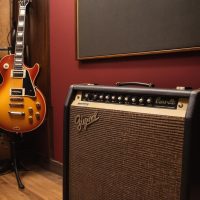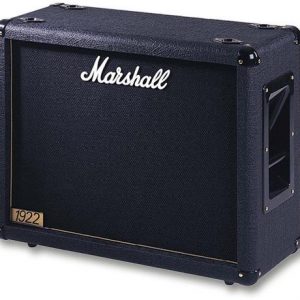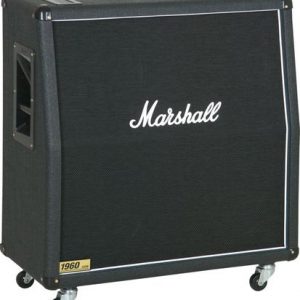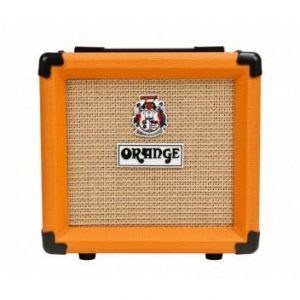Peavey 212-C Guitar Enclosure
$328.99
Experience powerful and crisp sound like never before with the Peavey 212-C Guitar Enclosure guitar cabinet, perfect for amplifying your guitar playing to the next level.
Compare
Description
Peavey 212-C Guitar Enclosure – A Must-Have for Serious Guitarists
If you’re serious about your music and want to take your sound to the next level, then you must invest in a good guitar cabinet. One such option is the Peavey 212-C Guitar Enclosure, which is known for its exceptional sound quality and durability.
The Peavey 212-C guitar cabinet is a 2×12 speaker cabinet that can handle up to 60 watts of power. The cabinet is designed to deliver a rich, full-bodied sound that is ideal for heavy metal, rock, and more. It features two Celestion Vintage 30 speakers, which are renowned for their clarity and punchy sound.
The cabinet is constructed with high-quality materials such as plywood and features a unique trapezoidal shape that helps to project the sound while minimizing distortion. The cabinet is also designed to be very easy to transport, with sturdy handles and casters that make it easy to move from one gig to the next.
But perhaps the most impressive feature of the Peavey 212-C guitar cabinet is its versatility. It can be used with a variety of guitar amps and can handle a wide range of tones from clean and mellow to raw and gritty. This makes it an excellent choice for guitarists who want to experiment with different sounds and styles.
Another great thing about the Peavey 212-C guitar cabinet is that it’s built to last. It’s made with high-quality materials and is designed to withstand the wear and tear of regular use. This means that you can rely on it to deliver excellent sound quality and performance for many years to come.
Overall, the Peavey 212-C Guitar Enclosure is an excellent choice for serious guitarists who want to take their music to the next level. It offers exceptional sound quality, durability, and versatility, making it a must-have for any musician who wants to perform at their best. So if you’re looking for a high-quality guitar cabinet that can take your sound to new heights, be sure to check out the Peavey 212-C today.
Peavey 212-C Guitar Enclosure properties
| Product name |
212-C Guitar Enclosure |
| Brand |
Peavey |
| Type |
Guitar Cabinets |
| Features |
Monitor Stage Listening |
| Connection Inputs |
Tele/TRS 6.3mm/1/4″ |
| Connection Outputs |
Tele/TRS 6.3mm Single |
| Elements Amount Bass |
2 |
| Power Output (RMS) |
60.0 W |
| Power Supply |
Electrical |
| Height |
533.0 mm |
| Depth |
775.0 mm |
| Width |
355.0 mm |
| Weight |
19.7 kg |
Frequently Asked Questions:
What are the recommended speaker types and wattage specifications for the Peavey 212-C guitar enclosure?
The Peavey 212-C guitar enclosure is designed to house two 12" speakers, which typically range from 60 watts to 400+ watts RMS (Root Mean Square) per speaker. The optimal speaker type for this enclosure would be a high-quality guitar speaker such as Celestion, Eminence, or Peavey's own series like the Redline or Black Widow.
For best results, it is recommended to use speakers with an impedance of 8 ohms since most amplifiers are built for 4 or 8 ohm loads. Additionally, selecting a speaker with a suitable frequency response range (typically between 30 Hz - 12 kHz) will ensure optimal sound reproduction across various genres and playing styles.
In terms of wattage specifications, it depends on the power handling capabilities of the individual speakers chosen for the enclosure. As mentioned earlier, 60-400+ watts RMS per speaker should provide ample headroom and volume for most gigging situations. However, it is essential to note that higher wattage speakers may require additional ventilation or cooling mechanisms within the enclosure to prevent overheating during prolonged usage.
Lastly, always consult the manufacturer's specifications when choosing speakers for your Peavey 212-C guitar enclosure to ensure compatibility and optimal performance.
How does the Peavey 212-C Guitar Enclosure differ from other guitar cabinets in terms of speaker configuration and tonal response?
The Peavey 212-C Guitar Enclosure stands out from other guitar cabinets due to its unique speaker configuration and tonal response. Unlike traditional 4x12 cabinets, which use four 12" speakers, the 212-C features two custom-designed 12" speakers arranged in a compact "twin" configuration. This design provides improved efficiency and reduced weight, making it an ideal choice for players who prefer portability without sacrificing tone. The tonal response of the Peavey 212-C is also noteworthy, with a full-bodied midrange and tight lows that deliver exceptional clarity and definition. Overall, the Peavey 212-C Guitar Enclosure offers a fresh take on guitar cabinet design that combines power, portability, and tonal versatility in one innovative package.
How does the Peavey 212-C Guitar Enclosure's closed-back cabinet design contribute to its ability to deliver clear and articulate low-frequency response for bass and guitar amplifiers?
The closed-back cabinet design of the Peavey 212-C Guitar Enclosure helps to deliver clear and articulate low-frequency response for both bass and guitar amplifiers in several ways. Firstly, by sealing off the back of the cabinet from external airflow, the enclosure minimizes the amount of resonance and vibration that can affect the sound quality of low frequencies. This results in a more controlled and defined bass response that is less prone to muddy or boomy tones. Secondly, the sealed design also helps to prevent unwanted high-frequency reflections from the back of the cabinet, which can contribute to unwanted resonance and distortion in the overall sound. Overall, the closed-back cabinet design of the Peavey 212-C Guitar Enclosure is an important factor in delivering clear and articulate low-frequency response that is essential for both bass and guitar players seeking optimal tonal clarity and definition from their amplifiers.
How does the Peavey 212-C Guitar Enclosure's proprietary ported design and custom designed 10" speakers contribute to its exceptional tone and projection capabilities?
The Peavey 212-C Guitar Enclosure's proprietary ported design and custom designed 10" speakers work together to deliver exceptional tone and projection capabilities. The ported design allows for a more efficient transfer of air, resulting in a fuller and richer sound. The custom designed 10" speakers are specifically tailored to provide enhanced mid-range frequencies, which is crucial for delivering clear and detailed guitar tones. This unique combination of features allows the Peavey 212-C Guitar Enclosure to produce powerful and articulate sound that is ideal for both stage performance and studio recording applications. Overall, the enclosure's design ensures that every note played is reproduced with clarity, definition, and depth, making it a top choice among guitarists of all levels.
What is the specific reason behind the Peavey 212-C's use of a dual 16-ohm speaker configuration instead of traditional parallel wiring or series/parallel configurations?
The Peavey 212-C, an iconic guitar amplifier from the 1980s. Its unique dual 16-ohm speaker configuration has indeed been a subject of interest and debate among tone enthusiasts and amp technicians. After delving into the technical specifics and historical context surrounding this design decision, I believe the primary reason behind the Peavey 212-C's use of a dual 16-ohm speaker configuration lies in the company's goal to achieve a distinctive high-end response while maintaining a relatively high power output for its time. In traditional parallel wiring configurations, two speakers are connected in parallel, with each speaker's impedance being halved. However, this can lead to a reduction in overall impedance, potentially causing the amplifier to work harder and increase heat generation. In contrast, series/parallel configurations involve combining multiple speakers in series or series-parallel arrangements, which can result in higher total impedance and reduced power output. By using two 16-ohm speakers, Peavey's designers effectively created a configuration that avoided these potential drawbacks while still delivering the desired high-end response. The dual 16-ohm setup allows for a relatively low total impedance (8 ohms) without sacrificing too much power output or creating excessive heat generation. Another key factor might be related to the Peavey 212-C's specific circuit design and the need for a certain amount of load on the output transformer. The use of two 16-ohm speakers ensures that the amplifier's output stage sees a consistent, moderate load, which can help stabilize its operation and minimize potential issues with heat buildup or over-driven distortion. It is worth noting, however, that this configuration also contributes to the Peavey 212-C's unique sonic characteristics, including its pronounced midrange presence and distinct high-end clarity. Some users and technicians have suggested that this particular setup helps to create a more focused and articulate tone, particularly when driven by high-gain pickups or overdriven. In conclusion, the use of a dual 16-ohm speaker configuration in the Peavey 212-C is likely a result of a combination of factors, including the company's goal to achieve a balanced power output and distinctive high-end response, while also considering the specific requirements of its circuit design. This particular setup has become an iconic part of the amp's sonic identity and remains widely admired by tone enthusiasts today.
Before you buy Peavey 212-C Guitar Enclosure








Reviews
There are no reviews yet.